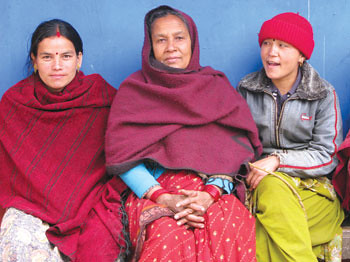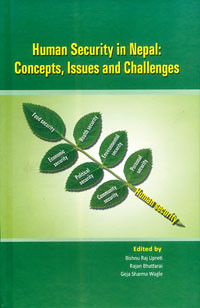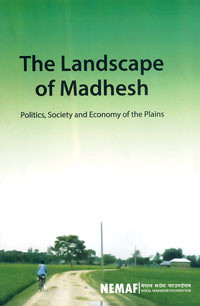Nepal is doing better, but not fast enough, to improve living standards of the poorest

KUNDA DIXIT
LESS POOR: Group of women in a village near Baglung where there are no young men because they have all gone abroad to work and send money home to their families.
Depending on who is counting, the proportion of Nepalis who are poor is either 44 per cent, 19 per cent, or 25 per cent. But no matter which criteria is used, all indicators point to Nepal’s poverty rate declining dramatically in the last 15 years.
The sharpest fall was announced earlier this month by the Oxford Poverty and Human Development Index which showed that Nepal’s Multidimensional Poverty Index (MPI) had come down from 0.350 in 2006 to 0.217 in five years. The percentage of poor people declined from 65 per cent in 2006 to 44 per cent in 2011.
The MPI employs 10 indicators to measure poverty using health, education, and living standard parameters and is regarded as the most accurate measure of the prevalence of poverty in a country. Sometimes, it is widely different from other indicators like international absolute poverty levels and the national income poverty line.
For example, on the basis of the percentage of people earning less than $1.25 per day, 25 per cent of Nepalis were absolutely poor in 2010. But when the threshold is raised to $2, the proportion of poor people jumped up to 57 per cent. The National Planning Commission’s own survey in 2011 showed that 25.2 per cent were living below the poverty line.
As a measure of deprivation, the MPI is the most comprehensive indicator of poverty because it looks not just at income, but also the status of health and education and indicators like access to safe water, sanitation, electricity, cooking fuel, and assets.

Human Development Report 2013
The Rise of the South: Progress in a Diverse World
UNDP, New York, 2013
“Nepal is doing considerably well for a low-income country and if it continues at this rate it will eradicate absolute poverty in 20 years,” said Sabina Alkire of Oxford University’s Department of International Development. In fact, Nepal did better than India, Pakistan, and Bangladesh jumping from the poorest country among seven South Asian states to the fourth poorest.
The biggest factor seems to be remittances from Nepali workers abroad, which has improved the assets of Nepali households. Health indicators like under-five child mortality, maternal death rate, and nutrition have also improved, as have enrolment rates and years of schooling. One reason could be that the baseline data for Nepal was 2006, which was just after the conflict and a low point.
Within Nepal, the fastest reduction in poverty has been in the western Tarai where the total number of poor went down from 67 per cent to 33 per cent in five years. The far-western Tarai also saw a dramatic drop from 81 per cent poverty to 50 per cent.

Human Security in Nepal:
Concepts, Issues and Challenges
Edited by Bishnu Raj Upreti, Rajan Bhattarai,
Geja Sharma Wagle
Nepal Institue for Policy Studies and South Asia Regional Coordination
Office of NCCR
(South-South), 2013
Pages: 296
Rs 400
However, in terms of incidence of poverty, the mid-western districts had the highest proportion, 60 per cent, with the far-western hills slightly lower. The districts of the western region had the smallest proportion of poor people at 33 per cent.
“Nepal surprises everyone for poverty reduction despite low economic growth and political instability,” said Bal Gopal Baidya of the research group, New Era, at the launch of the MPI results last month.
The MPI is closely linked to the concept of ‘human security’ which defines security not just in military terms, but also takes into account human rights, transparency, accountability, governance, social justice, and delivery of basic services.
This is the subject of the new book, Human Security in Nepal: Concepts, Issues and Challenges which looks at the broader definition of security ever since the idea was first proposed by the late Mahbub ul Haq of UNDP in 1994. The book has a chapter by Yuba Raj Khatiwada who is now Governor of Nepal Rastra Bank, in which he writes: “The focus of the state so far is on peace building and drafting a new constitution, not much work has been done to transform the economy and society.”
For more improvements in human security and living standards, do Nepalis have to wait till we get our political house in order? In fact, as we see from the improvements in MPI, progress has happened in spite of government neglect and even though the country suffered a ruinous war, political instability, corruption, and bad governance.

The Landscape of Madhesh
Politics, Society and Economy of the Plains
Edited by Ruhi Tewari and Anirudh Prasad Sah
Nepal Madhes Foundation, 2012
Pages: 152
Rs 300
The launch of the MPI report also coincides with this year’s Human Development Report 2013, which this year focuses on The Rise of The South and looks at how trade between emerging economies of the South has boomed and helped reduce poverty. The report also mentions Nepal as a low-income country that has made the most rapid progress in overall human development.
Despite all this, we get a sobering reminder of just how skewed development within Nepal is in another book, The Landscape of Madhesh: Politics, Society and Economy of the Plains. One chapter in the book by Uma Shankar Prasad makes it clear why Tarai districts which pay such high revenues to the state are so low on the MPI: the percentage of public expenditure in the Madhes is only 20 per cent even though it has nearly half the population.
In fact, per capita public expenditure by the state in the Tarai is only Rs 4,078 when it is nearly Rs 15,000 in the hills. Madhesi Dalits are at the bottom of the socio-economic ladder with 80 per cent of them living below the poverty line and only five per cent of them literate.
This regional inequality within Nepal is what is driving the demand for federalism in the Madhes, the far-west, and other neglected regions. Despite progress in the national average for nearly all development indicators, the record is uneven and the gap is growing between those who are ahead and those left behind.
Elections, a new constitution, and stable politics would help, but are not a pre-requisite for more efficient service delivery to deprived regions.